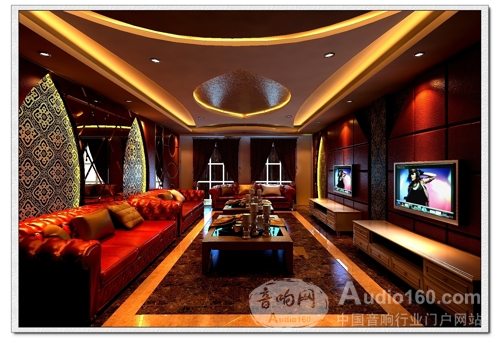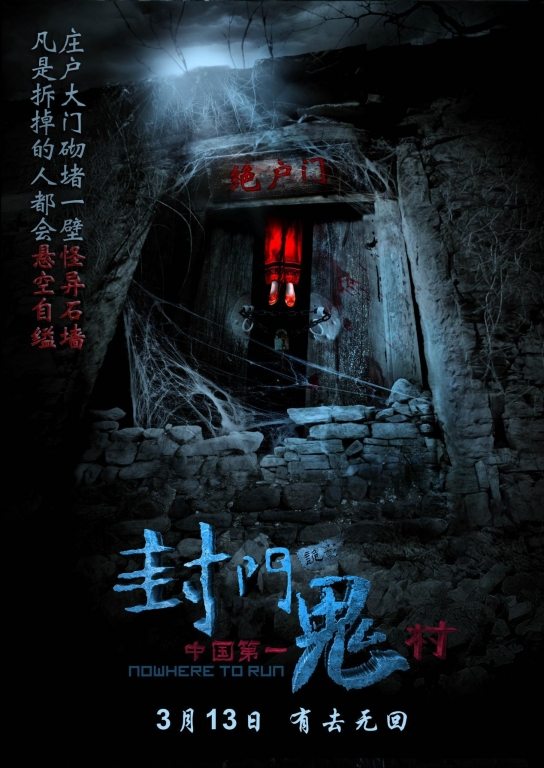
The above infographic summarises almost everything you need to know about cinema developments in China’s Tier 2 cities, in this case Harbin in north-eastern China, perhaps best known for its annual ice sculpture festival.
The chart on the left shows the opening of new multiplexes: four in 2012, five in both 2013 and 2014 and one already this year (four more expected) for a total of 22 sites and 110 screens. The middle chart shows the average price of cinema ticket, which rose to a peak of CNY Y100 (USD $16) in 2010 but declined to just CNY Y19 (USD $3.05) last year and predicted to fall to just CNY Y10 (USD $1.60) this year. The chart on the right shows year-on-year box-office growth, 31% up in the last year, placing Harbin 24th in the ranking of China’s cinema markets.
So screens are multiplying even as ticket prices plummet, with micro-channels like Cat’s Eye and Gewara subsidise the difference to keep the box office up.
As well as publishing data looking at statistical trends over the last decade, Hailongjiang (DBW) Government Network also looks at how social norms for cinema going in terms of who goes and what their motivation have changed:
Wang Lei, general manager of Harbin’s Taylor Cinemas has worked in a number of Harbin cinemas. 10 years ago he and his team did a survey of Harbin moviegoing crowd, to discover what type of people come to the theater to watch movies. They found it was mostly concentrated in the 22 to 30 year old age bracket, roughly equally divided between recently married and co-workers. Surveying the reasons they went to see the movie, the answer was relatively simple. Respondents were surprisingly consistent in their answer: “love”. Cinema was almost purely a dating site, with only a few parents bringing their children for holiday viewings, or units of some organization going to see some educational films.
Now you will find that the crowd that goes to cinemas has changed. There are two girls together going to see films, there are groups of boys; there are couples, husband and wife, and also children, and so on. Wang Lei said that the survey results show that in 2014, the cinema crowd is now 90% concentrated in the 18-35 age bracket, mainly student groups and working people. Compared to a decade ago the demographic has thus expanded. The purpose of watching movies has shifted from being a simple appointment, the the development of it as a recreational habit, to come specifically to the cinema for a film. LINK
Yang Network looks at how the sale of cinema tickets through mobile commerce third party vendors has exploded in the last couple of years – predicted to account for over 60% of ticket sales in 2015. The reporter also interviews a manager from Yonghua Kunming International Cinemas about its implications. The manager seems relaxed, saying that cinema and mobile ticketing platforms “will find their own balance” over time.
Since last year, buying movie tickets online sprung up and quickly occupied the online shopping market. Original fifty or sixty yuanfor a movie ticket on Time Network, Cat’s Eye, Net Ticket, Micro-channel, Public Comment, Taobao, Baidu and other electronic business platform, the lowest price is now just 9.9 yuan. If you do not watch movies through online booking, I am afraid your friends will say that you are OUT. Why are online tickets so cheap? Is such fare normal? Recently, the Evening News reporter interviewed insiders at the Kunming Theater. LINK
Now banks are also getting in on the action, with the likes of China Everbright Bank, ICBC, Agricultural Bank of China and CITIC Bank all offering credit card deals for cinema tickets at “cabbage price” (which is the Chinese equivalent of “cheap as chips” in UK or “dirt cheap” in US). Yet insiders are warning about the consequences, with operators like Cat’s Eye now said to be dictating the price at which they will block buy seats from cinemas, with “no room to negotiate.”
“A cinema professional named Wang told reporters that theaters understand online ticketing is a double-edged sword. E-commerce platforms offer generous “subsidies”, but theaters are slowly starting to lose the initiative and are “handing over” their ticketing business.” LINK
With mobile platform ticket sales already accounting for over 50% of tickets sold in some markets, some of these operators are now also negotiating with cinemas to sell popcorn and soda on their platforms.
A good piece from Variety’s Patrick Frater on the 45th anniversary of venerable Hong Kong film and cinema major Orange Sky Golden Harvest, which is at a cross road for how to best consolidate its forays into China and elsewhere.
Mainland China holds the key to the group’s future strategy. It opened 10 multiplexes in 2014 and says it is aiming for a further 11 this year. That would give it 70 complexes and a total of more than 500 screens in China.
Expansion for OSGH, like all mainland distributors these days, is no longer confined to the very biggest cities. It is reaching deep into the smaller cities, which are still large by European standards, with over a million inhabitants. LINK
Gnawing on duck necks is not permitted in Chinese cinemas. Nor are you allowed to bring in and consume buns, dumplings, durian (!!), tofu and other foods that smell. Yes, even if the customer is ‘King’ they are not allowed outside food in multiplexes, due to smell, hygiene and sanitation issues. Rather than just defending the consumers’ rights, this article actually takes the trouble of presenting the cinemas’ perspective. Given some of the outside foods they are having to clean up, you do have some sympathy for them. (And durian fruit stink so much that you are not even allowed to bring them onto public busses and metro in Singapore, let alone into cinemas.)
A staff member from Tianhe International Cinemas said that every time the audience had gone they left a lot of garbage, such as seeds and nuts shell behind. Because thee cinemas auditoriums are carpeted cleaning up is very difficult. There is a large section of the audience that the bring in buns, dumplings, durian, tofu and other foods smell, which means that other viewers find the smells unpleasant. On one occasion, the theater received a complaint from the audience, after they were found trying to bring in food into the theater. Finally, after a discussion, the customers were permitted to leave the food in a storage area in the cinema and collect it afterwards before being admitted to the auditorium.
Blue Ocean International Cineplex prohibit spectators to bring in food that sound or smell. “There is an inspection of the audience as they enter the cinema, but we cannot examine the content of their bags.” Staff said that every viewer will leave a lot of garbage behind, with melon seeds emitting loud sound being eaten is also very annoying. For some other food, the cinema does not interfere. LINK
Thinking of investing in a cinema in China? Audio160.com makes the case the private viewing theatres, a.aka. KTV cinemas (after the karaoke bars) where people can watch films, sing karaoke or play video games, are a better investment.
It is understood that the cinema box office split into 20-25% for rent, 20% distributed to the copyright owners, and 15% of labor costs, with gross profit margin reaching 30%, higher than the ordinary cinemas, so in three years you can recover the cost, but the sale of membership cards for wholesale cinema operators also contributes to the cash flow.
Discount video bar attendance is higher than traditional cinemas. Data show that the traditional theatre create initial attendance of 10-15%, while private viewing theatres attendance is over 30%. Person in charge of the daily rotation between each show over three weekends is up to seven times. LINK
Daily Siping looks at how the “cinema economy” is bringing along new consumer trends in terms of cinema consumption.
Nowadays, as 3D, 4D and even 5D dynamic film debut one after another, especially “Wolf Totem”, “Lost and Love” and other popular films detonated the box office, a “theater economy” is gradually coming into sight. Reporter survey found that the city’s major theaters, movie driven by consumer trends are emerging, businesses with a keen sense of smell for fashion have launched a variety of promotions, popcorn, cola and other food consumption outside the original books the movies were adapted from and so sought after merchandise together. LINK
Cinema Opening/Closings
Zendai Himalayas and China Film Group have signed a comprehensive strategic cooperation agreement for the Nanjing market for the Zendai multiplex project.
Film technical support, custom build ZENDAI Nanjing’s first art cinema news was released, the theater has been planning the size and characteristics of the many friends and fans guessing and attention. It permits the person in charge of large projects, permits general spending huge sums to build 12 luxury digital video hall of about 1,800 viewing seats, planning will be introduced by THX Dolby Atmos China credentials Imax. Studios are all within Yingting current international leader in projection equipment, sound systems, advanced audio-visual experience, and panoramic Himalayan innovation to create ultra somatosensory art environment for the first time also allows the audience to experience the Nanjing lament and excited viewing results. Not only that, in the future all the time at home and abroad are expected to be blockbuster premiere and Beijing, Shanghai and other cities in sync. LINK
Finally
The posters to this horror movie are so frightening that a mother complained of it traumatising her young child.
“Last night I took my children to the Qingdao Jiayuan Shopping Centre for an ATM withdrawal. I turned around to see very scary movie posters, which frightened my child.” Ms. Cao said that the 13 March release of the movie “Closed Doors Sly Shadow” posters and photographs from Ms. Cao’s point of view, the overall color of this poster is very dark, two posters have long jaws, one of whom also face long blocked, you can still see a large bloodstain on the arm, on the posters as well as the words “China’s first ghost village” and “no return” and other words, it looks really scary.
“After seeing the poster my child has been asking ‘Why is there so much blood’, ‘why is that person dead,’ and my child suddenly became particularly afraid of the dark, come home relatively dark stairwell.” Ms. Cao thinks this poster contains many horror elements, and that placing it inside the mall it is not suitable for public areas. She requested that the theater poster be removed, but the staff of the movie theater have refused Ms. Cao’s request. LINK






